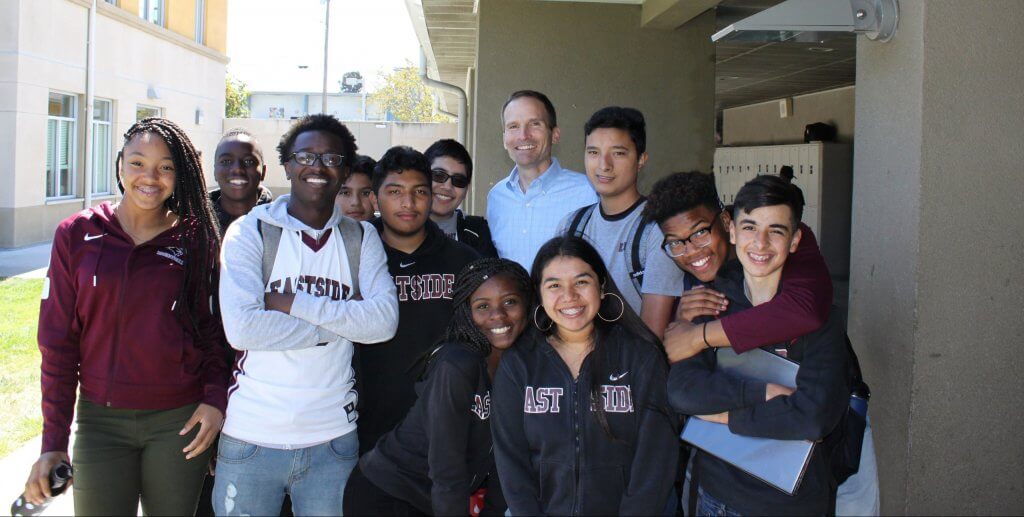Your Engine of Impact: Funding
Somewhat paradoxically, most nonprofit executives and board members spend more time and effort on financial matters than their counterparts in the business sector do. For people in the nonprofit sector, that’s an unfortunate fact of life, since asking for money can be fraught with psychological complexity. Indeed, even bold leaders of extraordinary nonprofits sometimes become remarkably timid when the need to ask for money arises.
But nonprofit leaders, whether they like it or not, must take seriously their obligation to secure adequate funding for their organizations. Funding is one component of the engine of impact that every nonprofit organization must build and tune to become truly effective. Leaders who want their nonprofit to achieve maximum impact must embrace the essentials of strategic leadership. We compare this kind of intentional leadership to a high-performance engine. In previous posts in this series, we have discussed five components of that engine: mission, strategy, impact evaluation, insight and courage, and organization and talent. In this post, we will discuss the all-important task of acquiring the financial resources to fuel your engine. The best way to access this fuel is by following a handful of tried-and-true principles; here we will address three of them. (We cover several other principles in our book, Engine of Impact.)
Go where the money is
When the bank robber Willie Sutton was asked why he robbed banks, he gave a memorable (if perhaps apocryphal) reply: “Because that’s where the money is.” Nonprofit leaders should seek funding for their organizations in that same spirit.
Going “where the money is” means recognizing that individuals account for most philanthropic giving in the United States today. In 2016, Americans gave $389 billion to charitable causes, and 72 percent of that sum came from individual donors. (Foundations accounted for 15 percent, bequests for 8 percent, and corporations for only 5 percent.) It is thus perplexing to note that many nonprofits make little effort to pursue fundraising from individuals. Neglecting individual donors is a strategic mistake, not only because it is akin to leaving money on the table but also because support from individuals can be less burdensome—and more likely to grow over time—than foundation giving. Individual donors may also bring additional benefits such as expertise, leadership, and access to networks.
Meet donors where they are
Successful fundraisers interact with donors on their terms and enable them to give in a way that makes them comfortable. Engaging with donors at this level starts with investigating why and how they might want to connect with your organization. Nowadays, given that so much information is available online, gaining insight on a potential donor’s interests is relatively easy. Even so, many fundraisers neglect this crucial step.
Once you have identified and investigated a potential donor, create a roadmap for your conversation with that person. If possible, bring along someone who is a social peer of this potential donor—a member of your board, perhaps. Then, in the meeting, resist the urge to wax rhapsodic about how compelling your nonprofit is, and instead focus on asking questions in order to understand what motivates the donor. In this way, you will be able to establish points of connection between your organization and the donor’s interests.
By conducting appropriate research, you will also be able to avoid the common mistake of asking for less than the donor is able to give. Indeed, out of a misplaced fear of asking for too much, many fundraisers ask for too little. Whatever you do, don’t make this error.
Master the ask
“The ask” is the essential, albeit often daunting, process of asking a specific donor for money to support your organization. When making an ask, be confident in your cause and concrete in your request. Be ready to provide a plan for how your organization will use the donation and a clear explanation of how the donated funds will further your mission. Some fundraisers ask for twice as much as they hope to get, betting that they are likely to get half of what they request. But we advocate asking for the actual amount that you hope to receive.
In considering how much to request, aim to specify an amount that will enable your organization to cover the full costs of a program or project, including overhead expenses. (Many donors, of course, are reluctant to provide support for overhead. But you should be upfront about what your organization needs in this area.) Show the potential donor that the work of your organization provides a meaningful opportunity to make a significant difference in the lives of its beneficiaries.
Then, once you receive a donation, don’t forget to express your gratitude. A sincere and appropriate “thank you” sets the stage for the next donation. As Ernie Iseminger, vice president of advancement at Claremont Graduate University, told us, “Stewardship is by far the most ignored and overlooked aspect of fundraising. If you thank your donors and steward their donation with care, you’ll find that asking them for money gets easier, not harder.”
Originally published by Guidestar


